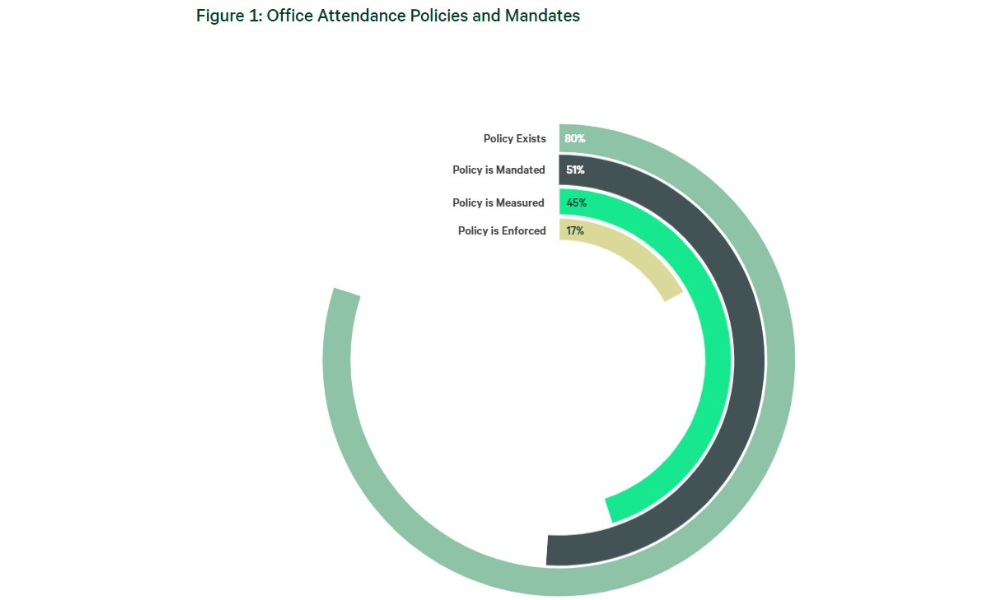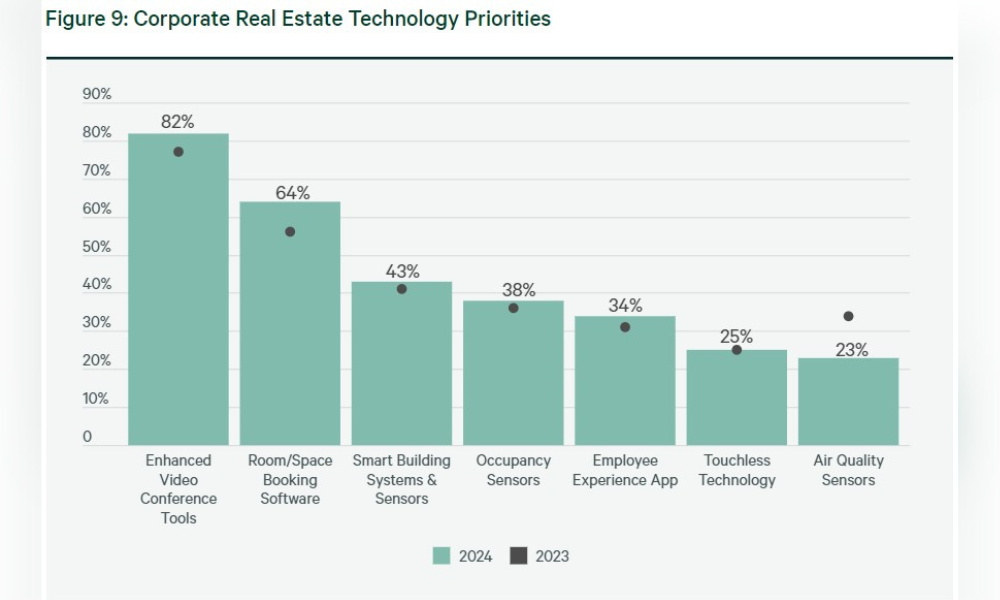Most employers want people on-site three days per week

In the Americas, return-to-office (RTO) policies are hardly being implemented, according to a recent report.
While most (80 per cent) employers have return-to-office policies, just 51 per cent are mandating the policies, reports real estate services firm CBRE.
Still fewer are those that actually measure (45 per cent) and enforce (17 per cent) such policies.
And few employers are getting the in-office attendance they want from their workers, finds the survey of 225 corporate real estate executives overseeing office portfolios across the U.S., Canada and Latin America.
Sixty per cent of respondents report that they want their employees in the office three or more days per week, but only 51 per cent report that employees work in the office at that frequency.
 Source: CBRE
Source: CBRE
Conversely, 37 per cent of employees show up one to two days a week, and only 17 per cent of employers are satisfied with that attendance.
Hybrid work: the new normal
However, most (64 per cent) employers report that their current office utilization patterns are at a steady state, up from 60 per cent last year and 43 per cent in 2022. This means that they have accepted that hybrid working is the new normal, according to the report.
“Holding employees accountable to mandates can create negative outcomes if employers don't strive to understand, and remedy, the barriers blocking more frequent office utilization,” according to the CBRE report titled 2024 Americas Office Occupier Sentiment Survey.
Workers want employers to cover at least part of the expenses that they have to pay to report to the office, according to a previous report.
How do you measure return-to-office efficiency?
So, what’s keeping employers from getting more workers to return to the office? Measuring the wrong data, finds CBRE.
Overall, those measuring RTO effectiveness most often track:
- space utilization (74 per cent)
- employee engagement (65 per cent)
- employee retention/attrition (35 per cent)
However, only 28 per cent of respondents use workforce productivity to measure workplace effectiveness.
This underscores “the difficulty of measuring productivity, particularly in the context of the workplace,” says CBRE.
Of the organizations using productivity to measure workplace effectiveness, 81% report that the workplace meets their needs.
Overall, just 73 per cent of employers say that their workplace is effective in fulfilling its purpose.
And employers are catering to the hybrid work setup, even in the office.
 Source: CBRE
Source: CBRE
Occupiers “continue to prioritize technology that better connects a hybrid workforce and makes space planning more predictable,” says CBRE.
“Enhancing video-conferencing tools in the office is a top priority for occupiers, with 82 per cent ranking it among their top three priorities. Room-booking software—which helps to manage limited space availability for a hybrid workplace—is a top priority for 64 per cent of companies.”
A number of employers have already called their workers back to the office. However, employers do not seem to be ready to meet workers’ needs, according to a previous report from Cisco.




